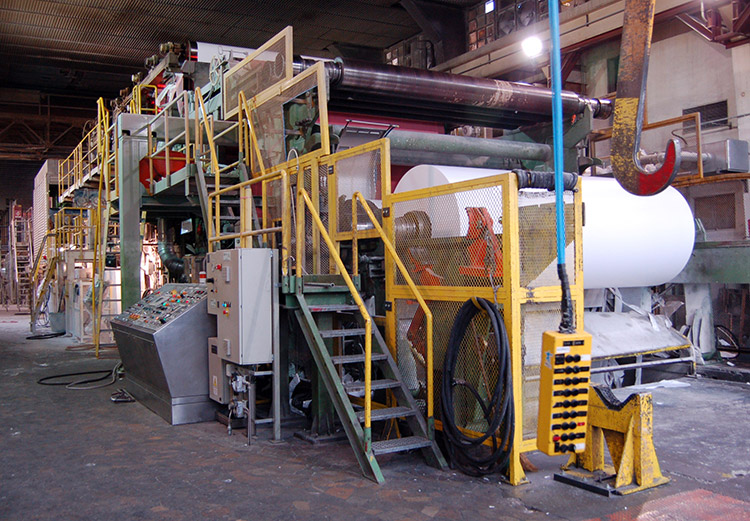Paper recycling involves mixing the already used paper with chemicals and water to break it down. The paper is cut into smaller pieces then super-heated. Heating breaks it into strands of cellulose, which is a type of organic plant material. The resulting material which is the mixture of water chopped paper and chemicals is called pulp or slurry.
Paper Recycling
paper recycling process involves major steps, which involves, collection of the waste paper up to the end product, that is a clean paper. These processes include, collection of waste paper, transportation, sorting, and processing it into usable raw material. The raw material which is the slurry is used in making of new paper.
Paper Collection
Already used papers are collected from waste bins either in the cities or dump sites, they are then deposited in big containers known as recycling containers. At this stage collected papers are put into a single main container.
Transporting the paper
Once all the waste has been collected from the damp sites and pilled in a major container, they are transported to the paper recycling plant. transportation is done by a collection van or track which move the containers to the paper recycling plant.
Sorting the Paper For Recycling
Once the waste paper reaches the recycling paper plant, the waste paper is sorted into different categories; newspapers, magazine paper, computer paper, news prints, card board. Sorting of paper is important to be able to separate waste paper and treat it differently during the paper recycling stages, this is done so as to produce different types of recycled paper products.
Turning the Waste Paper into Usable Raw Material
This is a major step in the paper recycling process. During this stage the waste paper undergoes a calculated procedure. Which include several major processes:
Making Slurry or Pulp
The pulping process includes the mixing of chemicals and water. For you to get the right slurry mixture, the waste paper is chopped using a machine to chop the waste paper into fine pieces this is done before adding water and the appropriate chemicals. The mixture of water, chemical and chopped waste paper is super-heated. This is done to break it into paper into fibres fast. the mixture eventually turn into a mushy mix; this mixture is referred to as a slurry or pulp.
Cleaning and Screening of the Pulp
This process is done to remove any form of uncleanness from the pulp. The pulp is forced through some screens. the screens have different hole sizes and shapes. The pulp is passed through the screens to get rid of contaminants such as globe of glue and plastics bits that might be present in the slurry. In case the slurry has more contaminants such as staples. The slurry has to be turned around in a cone shaped cylinders.
In the cylinders the heavy contaminators are thrown out of the cylinders using centripetal force. the light contaminators are moved to the Centre of the cone and are gotten rid from the slurry.
Deinking the Paper Fibre
After the steps of cleaning and screening, deinking has to be done to the paper fibre. This involves removing the ink from paper fibres of the slurry. All the sticky material mostly known as adhesives, glue residues at this stage they are also separated. Deinking is achieved through mechanical action combinations. Mainly it involves (shredding and the addition of chemicals). small and light ink particles are removed using water while the larger and heavier ink particles are gotten rid using air bubbles in a chemical process known as flotation.
Refining, colour stripping and bleaching
After the paper fibres in the form of slurry is di-inked, the slurry undergoes refining. In the refining stage, the paper pulp is beaten until the fibres swell. The beating is also responsible for separating fibres into individual fibres. It’s important to facilitate new paper production from separated fibres. In case colouring is required; colour stripping chemicals are added at this stage too to get rid of the dyes from the paper. During the process of colouring, brown papers are obtained. When the objective is to produce white recycled paper, the pulp is usually bleached using oxygen, chlorine dioxide, or hydrogen peroxide which usually makes them brighter or white.
New Paper Making
This is usually the final stage during the process of paper recycling. The cleaned paper slurry is then ready to be used in paper production of new paper. At this stage, the pulp is usually mixed with virgin wood fibres – this is done to provide the new paper with smoothness and strength. Paper fibres can be used alone at times meaning it’s not necessary to add the virgin fibre
During this step, the paper pulp is mixed with hot water and appropriate chemicals, hot water percentage in the mixture is far higher than the paper fibres and chemicals. The mixture is fed to a head box used in paper making machine. The pulp is sprayed in a continuous jet into a large wire mesh- like a screen. The screen moves at a very high speed in the machine. Once the water starts draining out, the recycled paper fibres start bonding together forming a watery sheet. The sheet moves through a continuous felt cover press rollers. The rollers compress out more water from the paper pulp sheet and the sheet eventually comes out as a freshly manufactured paper.
Dissolved Water Flotation
The water squeezed out is cleaned for reusing purposes within the plant. this is important to conserve water.
Waste Disposal
The usable material that is a waste product in the paper recycling process includes the plastics, filler fibres, ink and staple materials and is referred to as sludge. Sludge is usually buried in a landfill, or sometimes it’s burned to create energy at the paper mill and sometimes local farmers use it as fertiliser.

